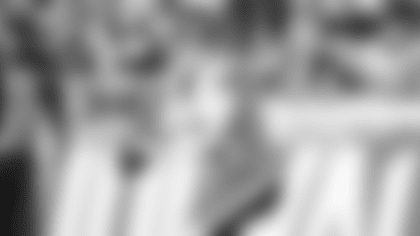Real Football Services' preview of the NFL Combine workouts, which begin Wednesday at Lucas Oil Stadium in Indianapolis, with player availability for the assembled media starting Thursday:
With the bowl games and the all-star games now in the rearview mirror, the focus of the draft evaluation process shifts to the "workout season." We've all heard or remember the famous examples of workout warriors who have shot up draft boards during this time of year. But if a team is smart enough to ask the right questions and cull the right information out of the process, they can reap the draft-day benefits rather than weathering a draft-day bust.
Questions That Need Answers
So what are the top questions heading into Indianapolis this week? The big stories always surround the guessing game over who will actually be working out at the combine. In recent years, most top prospects have dragged scouts and personnel men to campus for private workouts. But since the NFL began televising the event a few years back, more and more athletes are getting their work in at Indy.
The next big question usually has to do with the medical status of some of the top players. There are always a couple of surprise injury issues that pop up each year — guys who get hurt while working or who have an old or undiagnosed injury discovered during the medical exams.
This year teams will be looking for answers regarding QB Ryan Tannehill. Most teams have the Texas A&M signalcaller penciled in as the third QB in this draft, but they haven't seen him on the field in months because of surgery to repair a broken foot suffered during training for the draft season. OK State's Brandon Weeden and Michigan State's Kirk Cousins did well enough at the Senior Bowl, but Tannehill, when healthy, is more talented than both. Is he an option for a team that misses out of Andrew Luck and Robert Griffin III? If not, the trade landscape at the top of Round 1 just changed dramatically.
Then there is the actual testing. While fans love to talk about benchpress numbers and 40 times, scouts are more focused on which players are excelling at which drills.
Take the short shuttle, for example. A QB can run a 5.1 in the 40, but if he has a strong showing in the shuttle, that's more of an indicator for scouts of a player who can move effectively in the pocket. For the same reason, the short-shuttle time is a key stat for linebackers and running backs as well.
The 40 means little except for the WRs and DBs. Tests like the benchpress don't measure strength as much as they measure work ethic. Putting up 35 reps on the bench doesn't translate to being a better blocker or being a beast on the LOS. It shows scouts that the guy is in the weightroom. Teams can learn a lot about a player's habits and dedication from some of those types of drills.
The tests and drills that do measure significant football success are referred to as explosive tests. The vertical jump or the standing broad jump can begin to simulate a receiver going up to catch a high pass, or a D-lineman coming off a block, or a back jumping over a pile.
What Are the Scouts Coming to See?
At the end of the day, scouts, coaches and GMs are looking to find out as much as possible about these prospective players. They are about to invest millions of dollars in these players and they want to find out who they are. More times than not, that evaluation takes place outside the boundaries of the formal tests.
We know scouts who want to watch the players when they aren't on stage. They will observe them in the hotel lobby. They will follow the player and their agent to dinner. Is he drinking? Who's he hanging out with? Where is he hanging out and what is he doing? These personal habits in many cases are great indicators of success.
In the same way, scouts have been frustrated in recent years by the highly rehearsed answers they receive from players during the interview process. Most teams have had to become very creative in how they ask questions. Many interviewers work hard to get players out of their comfort zone and saying something unrehearsed.
Some teams bombard prospects with rapid-fire questions from five different people. Others run a good cop/bad cop routine. Still other teams purposely delay the start of the interview and hook up a Madden football game in the room for players while they wait. Scouts will observe things like competitiveness, football acumen (on some level) — and even if a player is a little too comfortable with the gaming world!
When it comes to actual players, scouts and personnel people are looking for the trend-breakers at each position. We mentioned the QB situation. Is Tannehill worth a high-first-round pick? Are players like Weeden or Cousins worth trading up for because of the drop in talent after the first two or three players at the position?
People responsible for drafting players are creatures of habit. For example, a rule of thumb is that you don't select a center before picks 30-35. Some teams are kicking themselves for sticking to that rule when Nick Mangold was drafted.
This year scouts will have a close eye on Wisconsin C Peter Konz at the combine to see if he's worth "breaking the rule" for. The same is true of Stanford G David DeCastro and Boston College ILB Luke Kuechly, both players with high-first-round grades who, because of the position they play, normally wouldn't be selected that high. Do you stick to the formula or do you break the rule?
Teams will also be looking at players as they relate to free agency. The NFL does these things by design, sort of creating some drama and suspense around the offseason. The combine takes place before the start of free agency, so scouts must know what is coming down the pike in order to make sure they evaluate the "right" talent in Indy.
For example, the free agency class of OTs is particularly weak this year, so if your team is in need of a tackle, like the Jets, you'd better be concentrating on the tackles this week. Teams in need of a QB have to know what they think about Matt Flynn before they can effectively evaluate the QBs at the combine.
Which Teams Have the Most Interest in the Combine?
Any team with a QB issue is really looking forward to these workouts. The Browns will have to determine if they will try to move up to select one of the top two prospects or if they believe Tannehill, Weeden or Cousins is the answer, which may allow them to move down and acquire more picks. The Vikings are in a position where they HAVE to support recent first-round pick Christian Ponder, but what will they do if RG III is there at their pick? The Seahawks need a QB, but how far are they willing to move? The answer to that question lies largely on the evaluations that take place this week.
The Rams' pick is for sale. Jeff Fisher has been out of football for a year and has a QB in Sam Bradford, so they really need to have a good grasp on their needs, as well as strong scouting reports on any number of players with first-round grades who could be in play for the Rams should they move down once, or multiple times.
There have also been plenty of coaching staff changes this offseason. Any team with a new head coach or new coordinator on either side of the ball will need to spend a lot of time with their GM and scouts in Indy, explaining what they need and what they are looking for. A DB with big numbers in the explosive drills and tests will be a better fit in a Cover-2 than a man scheme, for example.
Which Players Will the Jets Be Watching?
NT Sione Pouha is 33 years old and a free agent. That spot is absolutely critical to the Jets' defensive scheme, so we expect that they will come into town looking long and hard at the NTs. Memphis' 6'5", 350-pound Dontari Poe is a talented player who has some versatility, but while some scouts have a first-round grade on him, others are still not sold. The Jets need to figure out where they stand in that debate, and it will happen this week at the combine.
RT is also a pressing need for the Green & White, and there were not many who showed well at the Senior Bowl. Is Ohio State's Mike Adams a first-round answer, or will the Jets wait until Round 2 and take a look at Florida State's Zebrie Sanders? They'll go a long way toward figuring that out this week.













